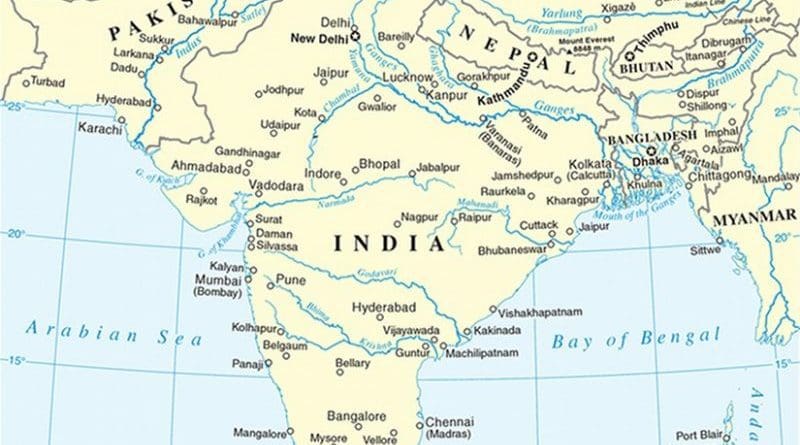Preventing Nuclear Terrorism In South Asia – OpEd
By Rabia Javed
Just how well is India a South Asia’s nuclear-armed state, taking care of their nuclear materials? The history paints a daunting picture of liabilities in the event of a mishap that reoccurred in the past. Since India, like Pakistan, is not a party to the NPT, it is not subject to IAEA-NPT safeguards.
Taking a sharp reversal of history, the incidences of nuclear theft date back to the seizure of nuclear fissile material in the early 1980s. However, after the 1998 nuclear testing by India, as well as the fastly swelling Indian nuclear programme – combined with the more than a dozen insurgency movements in India – the threat of theft and possible use of nuclear weapons by sub-national groups and terrorists has been intensified in South Asia. This threat is further swelled because India has been well-known to make clandestine purchases of fissile material from private sellers abroad normally in the old Soviet territories.
While reports of Indian involvement in the theft of nuclear fissile material dates back to the early 1970s, the magnitude of the threat increased manifold in the 1980s and 1990s. In the late 1980s, the CIA had concluded that India was trying to develop a sophisticated Hydrogen bomb. In 1994, on a tip-off, a shipment of beryllium was caught in Vilnius, worth US $ 24 million. The buyer was thought to be either from India or North Korea – though the shipment was caught before it could reach the buyer. Interestingly, as per an Indian parliamentary report, as many as 147 mishaps or security related occurrences were reported in Indian atomic energy plants between 1995 and 1998.
In July 1998, India’s Central Bureau of Intelligence (CBI) unearthed a major racket in the theft of uranium in Tamil Nadu, with the seizure of over 8 kg of the nuclear material in granule form and the arrest of three men. The contents of this theft were sent to the Indira Gandhi Centre for Atomic Research (IGCAR) for preliminary analysis and the Centre declared that there were two kinds of substances found in what they said was 6 kg of uranium – natural uranium (U237and U238) and U 235, which is weapons grade uranium. The substances were found in the possession of Arun, a structural engineer, S. Murthy and their associates.
Another uranium theft case to come to light was reported on 27 August 2001, where police caught 200 grams of semi-processed uranium from West Bengal and arrested 2 men. According to the press report, Indian intelligence officials believed that a uranium smuggling gang was operating in West Bengal.
Again, on May 1, 2000, Mumbai police seized 8.3 kgs of uranium. The uranium was termed as depleted but radioactive uranium by the Bhabha Atomic Research Centre (BARC). In this instance, the source of this uranium theft – as cited by the police – had been a local hospital, the Leelavati hospital, in Bandra. The fissile material had been found in the custody of scrap dealers who were caught and charged under the Atomic Energy Act.
Around 9 kg of radioactive uranium, a banned material, has been seized from two persons in Thane, a top police officer said today. Laboratory tests have confirmed that the seized material is depleted uranium, which is a radioactive poisonous heavy metal. According to preliminary investigations, it was brought from abroad and was intended for sale to some unknown parties in Thane.
The Thane police had arrested Kishore Prajapati with 8.86 kilograms of depleted uranium. The uranium was valued at Rs 3 crore per kg. Prajapati a scrap dealer during investigations told the police that he had found the radioactive material in a scrapped Air India aircraft which he had purchased through his contacts.
Most of the accused caught by police have been scrap dealers who are obviously used as front men, which may well indicate the prevalence of organized crime relating to nuclear materials. The source of origin, in most case, as stated by the police, have been cancer hospitals –although the nature and quality of the uranium found in the use of the hospitals has differed from case to case.
So, the focus has to shift to Indian nuclear facilities and the whole issue of their safety – especially in relation to theft and nuclear terrorism. While the rising incidents of nuclear theft create the possibility for a lucrative underground market for potential terrorists, unsafe nuclear facilities create risks for the surrounding populace – which has to live in constant terror of a nuclear accident. Less understood was the most recent racket busting of 31 tons of nuclear material smuggling from India which nonetheless shows their resolve and seriousness about the issue.
When one puts all the reported theft cases in a nutshell, serious questions arises whether India was liable to be a partner in indo-US civil deal? Was the credentials so strong enough for such a deal that surpasses such important revealed mishaps been overlooked? Is India still liable enough with such a daunting history to be a mainstreamed in the most important Nuclear Suppliers Group?
This article was published at Modern Diplomacy.

